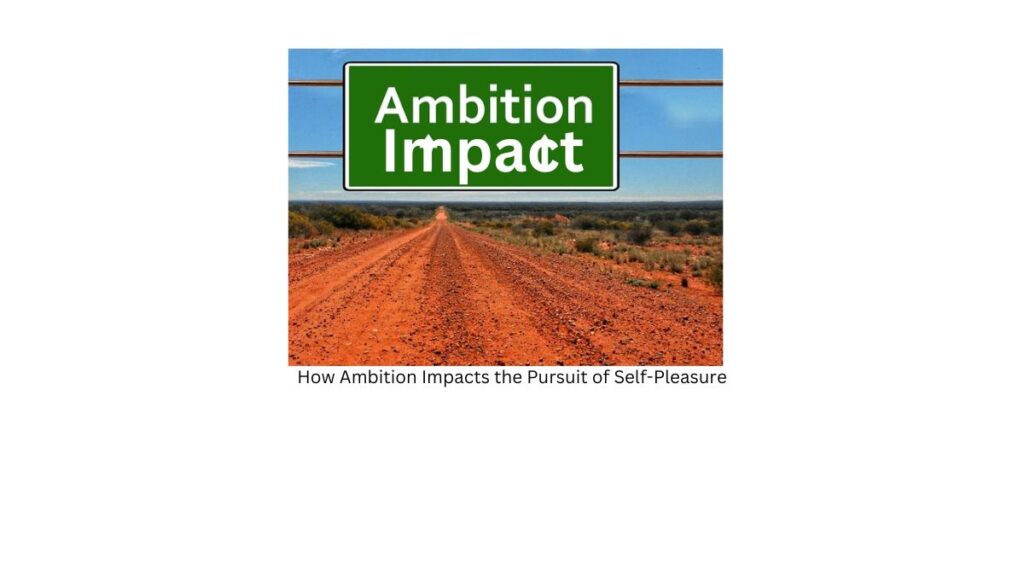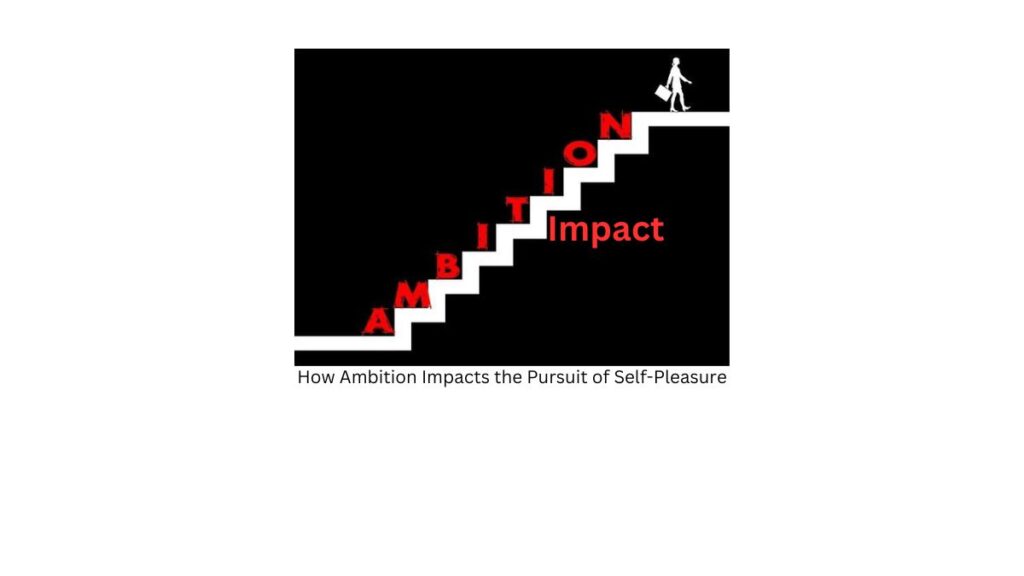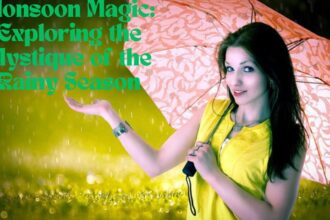Introduction:-

The Quest for More: How Ambition Impacts the Pursuit of Self-Pleasure
In a world driven by ambition and the pursuit of success, individuals often find themselves on a relentless quest for more. Whether it’s climbing the corporate ladder, achieving financial milestones, or chasing personal goals, the desire for constant improvement can significantly impact the pursuit of self-pleasure and satisfaction. In this article, we will delve into the intricate relationship between ambition and the quest for personal fulfillment.
The Ambition Impacts Paradox
Ambition, in its essence, is the driving force that propels individuals to set and achieve goals. However, the paradox lies in the potential conflict between ambition and the pursuit of self-pleasure. As the thirst for success intensifies, individuals may unknowingly sacrifice moments of joy and satisfaction in the relentless pursuit of their ambitions.
The Toll on Personal Relationships:
One notable aspect of the impact of ambition on self-pleasure is its influence on personal relationships. The demands of a high-achieving lifestyle can strain connections with family and friends, leading to a sense of isolation and a diminished ability to derive pleasure from personal connections. Striking a balance between ambition and nurturing meaningful relationships becomes crucial in navigating this complex terrain.
The Mental and Emotional Toll:
The constant pursuit of more can take a toll on mental and emotional well-being. Burnout, stress, and anxiety often accompany ambitious endeavors, overshadowing the joy that should accompany personal achievements. Understanding the signs of mental fatigue and implementing strategies for self-care are essential components of maintaining a healthy balance between ambition and self-pleasure.
Rediscovering Self-Pleasure:
Acknowledging the impact of ambition on self-pleasure is the first step towards reclaiming a sense of balance and fulfillment. This may involve setting realistic goals, embracing the present moment, and finding joy in small victories. Cultivating a mindfulness practice can also be instrumental in reconnecting with the simple pleasures that may be overshadowed by the pursuit of grand ambitions.
Strategies for Balance:
Finding equilibrium between ambition and self-pleasure requires intentional efforts and conscious choices. This section will explore practical strategies for achieving balance, such as time management techniques, boundary setting, and prioritizing self-care. By incorporating these strategies, individuals can navigate the ambitious path while preserving their sense of joy and satisfaction.
Case Studies and Real-Life Experiences: To provide a deeper understanding of the complexities surrounding ambition and self-pleasure, this article will showcase real-life case studies and experiences. By learning from the journeys of others, readers can gain valuable insights into the challenges and triumphs of balancing ambition with personal fulfillment
Is there a fundamental difference between the pursuit of pleasure and the pursuit of happiness?
there is a fundamental difference between the pursuit of pleasure and the pursuit of happiness. While these concepts are related, they involve distinct aspects of human experience and well-being.

- Pursuit of Pleasure:
- Immediate Gratification: The pursuit of pleasure often involves seeking immediate gratification or sensory enjoyment. This can include indulging in pleasurable activities such as eating delicious food, engaging in entertaining experiences, or experiencing sensory pleasures.
- Short-Term Focus: Pleasure is often associated with short-term, transient experiences that bring momentary joy or satisfaction. It may not necessarily contribute to a lasting sense of fulfillment or overall life satisfaction.
- Varied Sources: Pleasure can be derived from a variety of sources, including physical sensations, sensory experiences, and external stimuli. It is diverse and subjective, varying from person to person.
- Pursuit of Happiness:
- Long-Term Well-Being: The pursuit of happiness involves a broader and more enduring quest for well-being and life satisfaction. It encompasses a sense of purpose, meaning, and fulfillment that goes beyond momentary pleasures.
- Holistic Perspective: Happiness involves a more holistic perspective on life, considering factors such as personal relationships, accomplishments, personal growth, and a sense of purpose. It extends beyond the realm of immediate pleasures and incorporates a long-term view of contentment.
- Emotional Resilience: Happiness is often associated with emotional resilience and the ability to navigate life’s challenges with a positive outlook. It includes a sense of inner peace and contentment that transcends the fluctuations of momentary pleasures.
In summary, the pursuit of pleasure is often focused on immediate, sensory, and transient experiences that bring momentary joy. On the other hand, the pursuit of happiness involves a more comprehensive and enduring quest for well-being, encompassing factors such as purpose, meaning, and long-term life satisfaction. While pleasure can contribute to happiness, they represent different dimensions of the human experience, and true happiness typically involves a more profound and sustained sense of fulfillment.
What is the pursuit of real happiness?
The pursuit of real happiness is a multifaceted and individual journey that goes beyond momentary pleasures and involves seeking a deeper, more enduring sense of well-being and contentment. Real happiness is often associated with a sense of purpose, meaningful connections, personal growth, and overall life satisfaction. Here are key aspects of the pursuit of real happiness:

- Meaning and Purpose:
- Finding meaning and purpose in life is a crucial element of real happiness. This involves identifying and aligning one’s actions with personal values, passions, and a sense of contribution to something greater than oneself.
- Authenticity:
- Embracing authenticity and being true to oneself is essential for genuine happiness. This includes self-awareness, self-acceptance, and living in alignment with one’s core values and beliefs.
- Positive Relationships:
- Building and nurturing positive, meaningful relationships with others contribute significantly to real happiness. Social connections, empathy, and a sense of belonging play key roles in fostering emotional well-being.
- Personal Growth:
- The pursuit of real happiness involves a commitment to continuous personal growth and development. This may include learning new skills, setting and achieving goals, and adapting to life’s challenges with resilience.
- Mindfulness and Presence:
- Practicing mindfulness, being present in the moment, and cultivating an awareness of one’s thoughts and emotions contribute to real happiness. Mindfulness encourages an appreciation for life as it unfolds.
- Gratitude:
- Cultivating gratitude involves acknowledging and appreciating the positive aspects of life. Regularly expressing gratitude has been linked to increased levels of happiness and overall well-being.
- Balanced Lifestyle:
- Striking a balance in various life domains, including work, relationships, leisure, and self-care, is crucial for sustained happiness. Avoiding excessive stress and burnout while prioritizing well-being contributes to a fulfilling life.
- Contributing to Others:
- Acts of kindness and contributing to the well-being of others can enhance personal happiness. Helping others fosters a sense of purpose and connection to the larger community.
- Adaptability and Resilience:
- Real happiness involves the ability to navigate life’s challenges with adaptability and resilience. Developing coping strategies and maintaining a positive outlook in the face of adversity contribute to long-term well-being.
- Reflective Practices:
- Engaging in self-reflection, introspection, and regular assessments of personal values and goals can guide the pursuit of real happiness. This self-awareness helps individuals make choices that align with their authentic selves.
In essence, the pursuit of real happiness is a holistic journey that integrates various aspects of life, including personal growth, positive relationships, mindfulness, and a sense of purpose. It is an ongoing process that requires self-awareness, intentional choices, and a commitment to living a life that reflects one’s values and aspirations.
Conclusion:
In the pursuit of more, individuals must tread carefully to ensure that ambition enhances rather than diminishes self-pleasure and satisfaction. By recognizing the potential pitfalls and implementing strategies for balance, it becomes possible to achieve ambitious goals without sacrificing the joy that life has to offer. Ultimately, striking a harmonious balance between ambition and self-pleasure is the key to a fulfilling and meaningful life journey.





